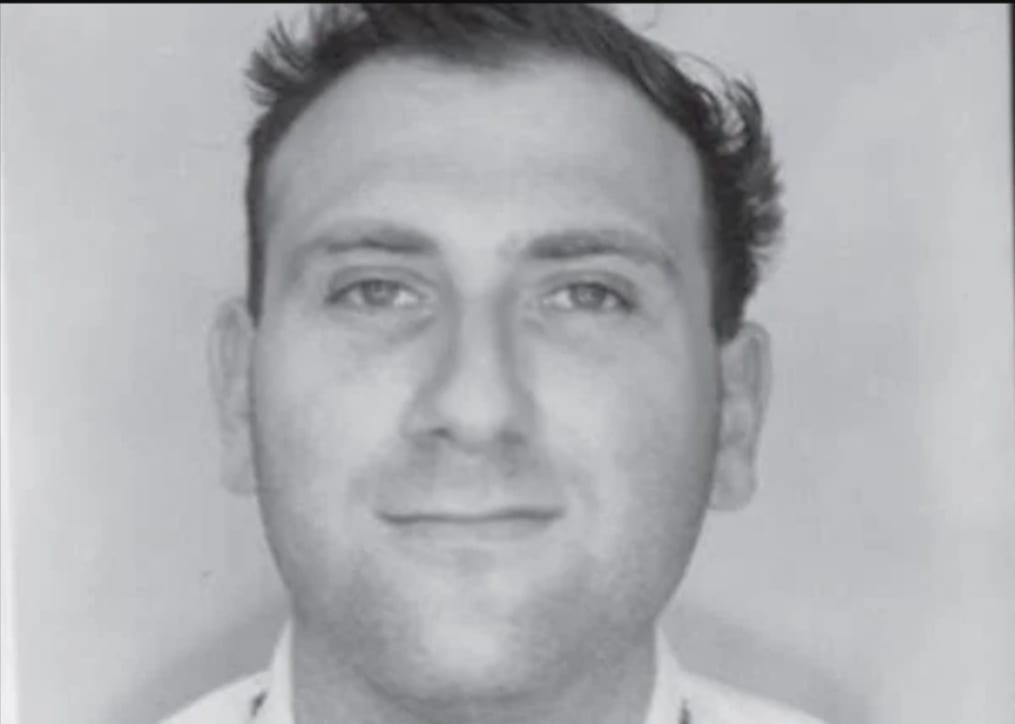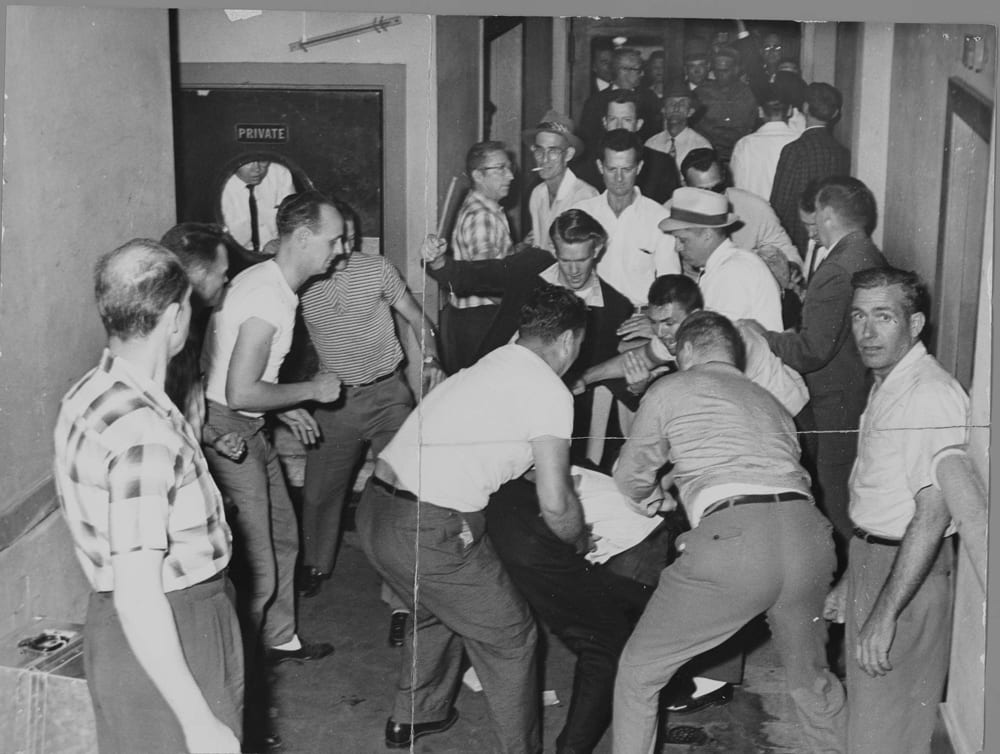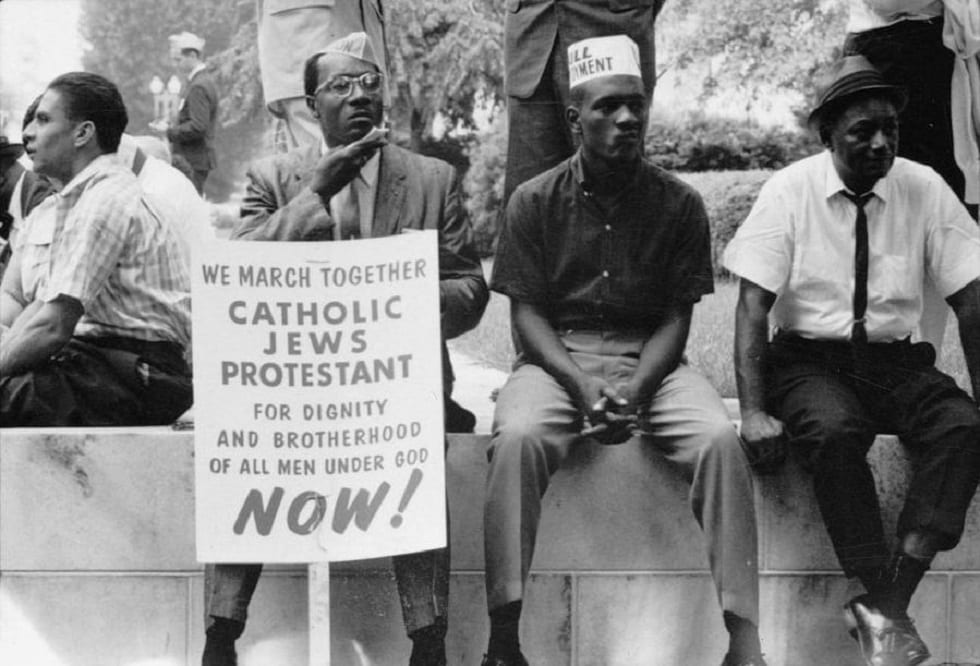Flames and confusion wrap America in the past three weeks. Flames – the result of a hideous murder followed by bloody riots in which hundreds of years of black discrimination, anger, and hate exploded like bursting steam; and confusion – didn’t a black man ended two terms as one of the most popular American presidents, only four years ago? Didn’t a popular series about a black kid who ended up a legendary basketball star and an American icon admired by whites and blacks, ended only last month?
Amongst this riotous chaos, it seems that the forefathers’ promise for “Life, Liberty and the pursuit of Happiness” for everyone is being silenced by toxic cries people slam at each other, while covering their faces with masks, not to protect them from the tear gas used by the police, but due to a deadly pandemic that threatens every one, totally regardless of how concentrated the melanin in their blood is.
What can we do then? We can look back to times when American reality seemed more explicit. When black was black, white was white, and racism was established, organized, and firmly fixed within the American soul. Well, perhaps not all souls, there were indeed a few exceptional righteous, one of which is our hero today: rabbi Eliahu Allan Levine.

Born in 1932 in Montreal, Canada, rabbi Levine visited Israel in 1956, studied Hebrew in Jerusalem, then fell in love with Susan Marsh, who immigrated to Israel from Morocco. They married and settled in Rochester, New York, where after his ordain as a reform rabbi, Levine served as the rabbi of the Jewish congregation. After his death his son told that while watching TV. one day, he learnt about a most inspiring social project organized by activists from the civil rights movement, in order to fight racial discrimination against the blacks in the south of U.S.A.
Five years after Rosa Parks refused to rise from her seat in the front of bus number 2857 in Cleveland Avenue, Alabama, the American court ruled that racial segregation in public transportation was illegal. It was 1960, and the notorious Jim Crow laws that had been enforcing racist segregation in the south for almost a century, allowing segregation in the public sphere such as water fountains, restrooms and outdoor benches – were coming to a dramatic end. But the whites in the south weren’t going to give up without a fight. Although the law passed, in reality nothing seemed to change – segregation was alive and kicking harder than ever.
Rabbi Levine was watching a story about a project called the freedom rides. Black and white human rights activists were riding public interstate bus lines to the southern states, as a nonviolent protest against the racist segregation, in order to make sure that the court rule was being carried out. Levine decided to join the noble cause himself.

His first freedom ride, with a mixed group of blacks and whites, was to the airport of Jacksonville, Florida, where they sat together in the segregated restaurants area for a few minutes, then were immediately arrested and imprisoned. The event echoed throughout the United States. After his release, Levine got a letter from James Farmer, one of the renowned leaders of the civil rights movement. Farmer thanked Levine for participating in the act, that joined the long history of the fight for equality for black people.
But even a thousand words worth less than one image – in this case, one of the most known photos of the blacks struggle for equality. On March 7th, 1965, 600 activists were marching from Selma to Montgomery in Alabama. As they reached the Edmund Pettus Bridge, crossing the Alabama river, they encountered barricades of the state police. The cops attacked the activists brutally, using tear gas. 17 people were injured on what was to become “bloody Sunday” t.v. covered the events, featuring pictures of protesters thrown down to the ground, beaten and wounded.

One of the photos shows a young woman called Amelia Boynton Robinson, laying on the road, unconscious, after being beaten by cops. Rabbi Allan Levine is caught on film helping her out, a kippah on his head and a cigar in his mouth. The photo was published in American media and was announced photo of the year of Life Magazine, and since then it is displayed annually on Martin Luther King day, commemorating the leader’s birthday.
Rabbi Levine carried on with his devoted activity and freedom rides, even though he had to make personal and professional sacrifices, as he had to be away from his congregation a lot, which they did not like at first. However, his son told later, after the struggle became successful, they were proud of him.
In 1971 Allan and Susan Levine came to Israel and were among the founders of the southern kibbutz of Yahel, the first reform kibbutz. They have 3 sons, one of whom was killed during his army service. Four years ago, rabbi Levine died at the age of 84.
We all are familiar with another famous photo, symbolizing Jewish contribution to the blacks struggle in America, picturing rabbi Joshua Heschel, side by side with Martin Luther king in a rally in Selma, Alabama, but few if any, heard of the humble rabbi Levine with his cigar and kippah, aiding Amelia Boynton Robinson in the photo shot not far from there, and became a black action icon. In today’s burning and confusing reality that splits America, let us remember him and the like of him as well.
(Translated from Hebrew by Danna Paz Prins)